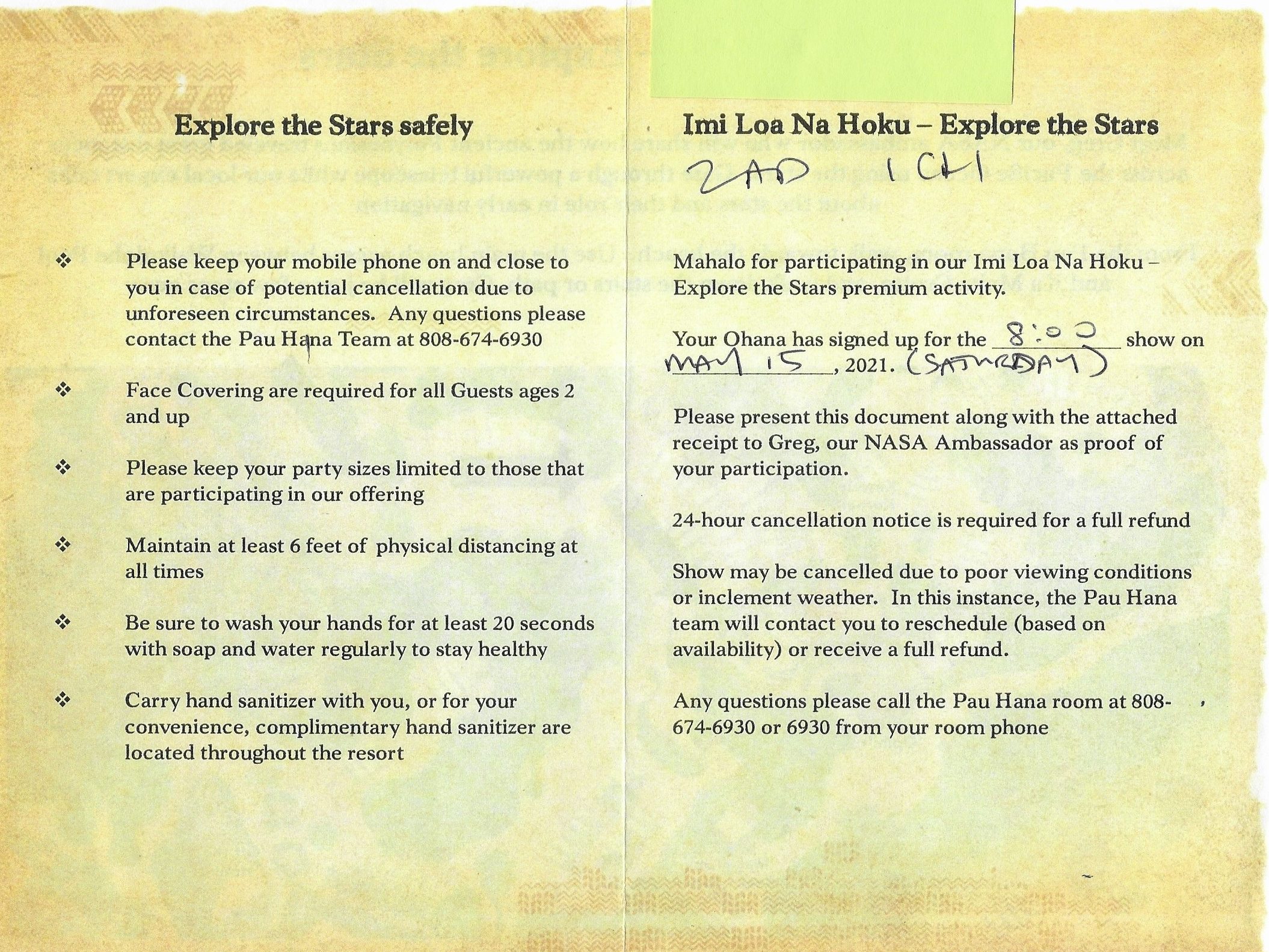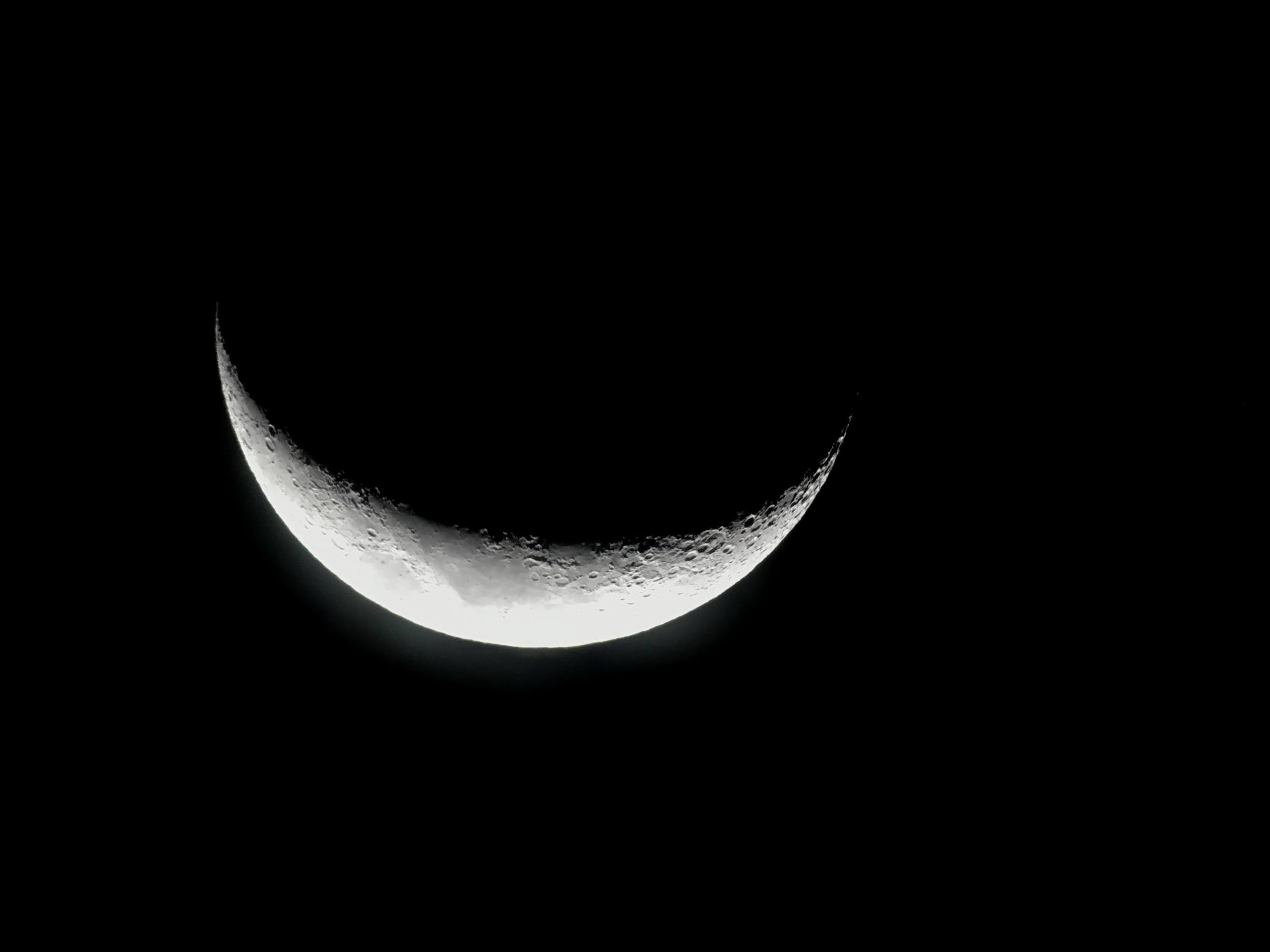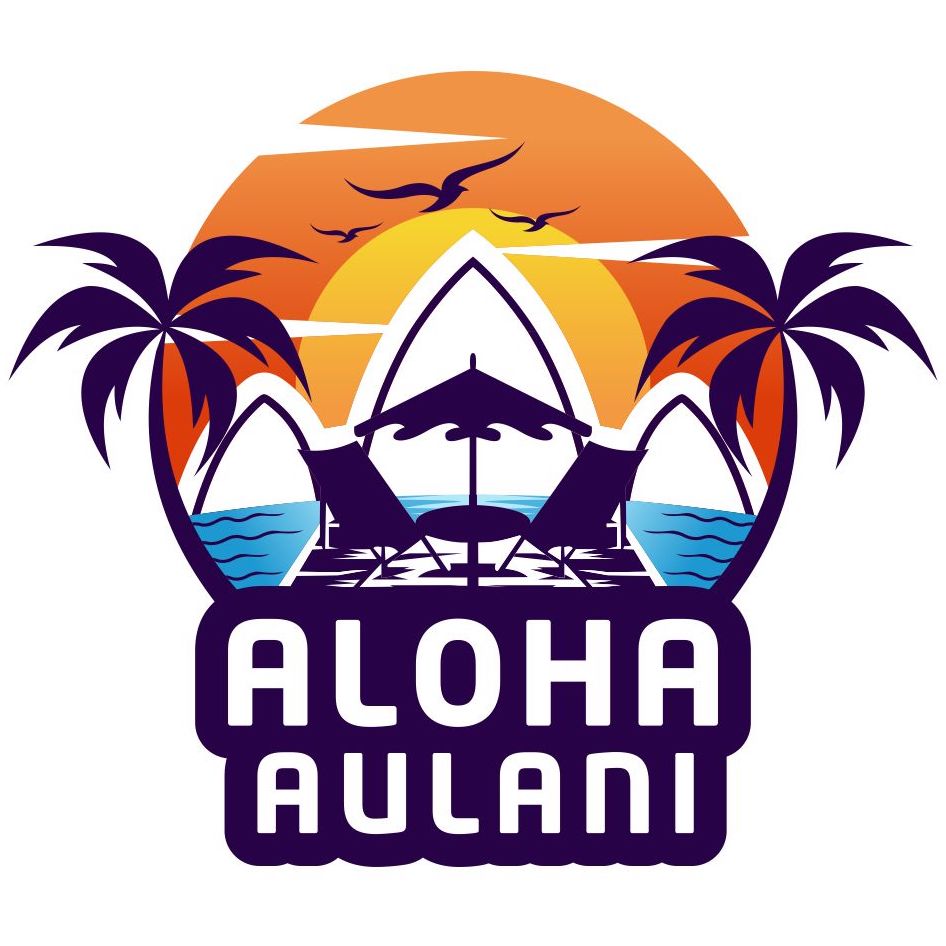
“Imi Loa Na Hoku – Explore the Stars” is a premium experience where you meet with a guide who provides a telescope and takes you on a 45 minute long tour of the night skies. To reserve the experience, we went to the Pau Hana room where we were told that all slots for the day were open.
We were given a paper with our reservation information written on it along with general information about the experience and a map to where we were to meet our stargazing guide, Greg. We were told we needed to show him the paper, but he just asked our names and that was sufficient.


We arrived about 10 minutes early. Greg said we were the only ones signed up, so we got started early. A few minutes in, another couple joined us saying they had just signed up.
The telescope, a Celestron CPC 1100, is set up on Aulani property near the beach, just down a flight of stairs leading from the main pool deck to the beach, right behind the Little ‘Opihi’s kiosk. The area is corded off and there are pool chairs to sit on.

The night consisted of a repeating sequence where Greg would position the telescope and then talk about what we were all looking at while we took turns looking through the eyepiece. One member of our group was a child, so Greg put out a step stool so they could reach the eyepiece. The telescope has an auto-guide on it, so you don’t have to wait long while it skews between astronomical sights.

We started with the moon which was just a sliver the night we went. Greg told us it’s better to look at the moon at less than full because you really can’t see all the details of the craters when the moon is full. The moon set about half way through our session which was ideal for less light.

After the moon, we were taken on a tour of nebulas, constellations, star clusters, and binary stars. Not all of this used the telescope. Through the use of a laser pointer, Greg grouped together stars to show the constellations and then we’d focus on one or two things in that constellation using the telescope. To be honest, other than the moon, the vast majority of what we looked at through the eyepiece was nothing more than little dots. The thing is, knowing that those little dots are a cluster of newly born stars really leaves you with a sense of awe. Still, don’t go in to this thinking that you are going to be seeing the details of the rings of Saturn or the Great Red Spot on Jupiter. Those really just looked like slightly bigger fuzzy dots.
If a member of your group is a Harry Potter fan, they’ll enjoy the many references to stars and constellations with the same names as the characters: Sirius, Draco, Bellatrix, Scorpius, Pollux, etc. You also learn about how stars are used in navigation and that certain stars being directly overhead are used to find Hawaii, Samoa, or New Zealand.
We finished a little before 8:45. In that time we also saw 3 satellites. The host’s focus is on the stars and not the satellites, so with the exception of one that he pointed out, the others were just by other participants spotting them. If you are into satellites, I recommend using one of the many tracking apps out there and taking note of the times/locations of the ones you are interested in. Most of the ones we saw were listed as being fairly dim on the app (+2 or +3), but they still looked fairly bright to us, so don’t be discouraged if nothing listed is particularly bright.
For details, pricing, and booking information, go to https://alohaaulani.com/things-to-do/imi-loa-na-hoku-explore-the-stars/.
